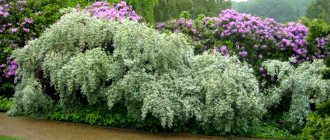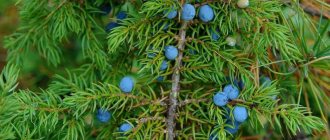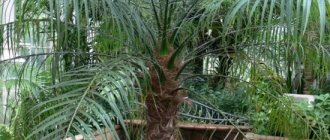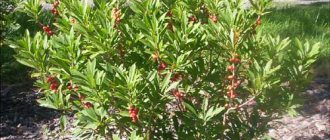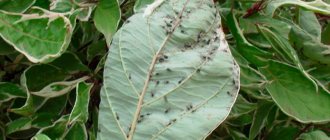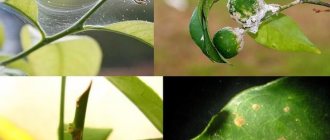There are several dozen species of basil in the world, but only a few are used for selection and cultivation as a garden and essential oil crop. Read: Basil - benefits and harms for men's health!
What is basil: description
Noble, aromatic or regular basil, which has a peppery smell and a pungent aftertaste, is considered an important base. Thanks to this basis, many species have been bred that have large, smooth and often wrinkled leaves. As a result, many breeders were able to obtain plants with vanilla, menthol and lemon odors.
The tetrahedral shoots of basil sometimes grow up to 60 cm in height. Some varieties of the plant are approximately 70 cm in height. The leaves of the aromatic herb can have different colors, for example, green, purple or burgundy. At the tips of the shoots, inflorescences consisting of several buds are formed. The flower of this plant also comes in a variety of colors, from white to purple.
Basil
As a rule, basil blooms in mid-summer and produces buds until autumn. The calyxes, stems and leaves of the plant contain glands that accumulate essential oil. Thanks to this oil, the plant has a pleasant aroma. Basil also contains acidic saponin, plus tanning components, carotene and other substances.
Useful properties of spices
The beneficial properties of basil are as follows:
- It has an antiseptic effect.
- It can be taken as a remedy to combat depression.
- This spice increases tone and improves overall well-being.
- The plant in essential oil form is used in aromatherapy because it has a calming and relaxing effect.
Despite the above properties of basil, its overdose can lead to:
- poisoning;
- irritation of the mucous membrane;
- allergies;
- cramps.
This spice is contraindicated:
- women bearing a child;
- nursing mothers;
- persons suffering from heart disease;
- people with thrombosis and poor blood clotting;
- with individual intolerance.
In conclusion, we note that this plant is used in many cuisines around the world. It is added to salads, meat and fish dishes. Basil goes especially well with tomatoes and other vegetables. Therefore, be sure to plant it in your garden.
What types of basil are there: types, colors
In total, there are approximately 70 varieties of basil in nature. But the most popular today are the following:
- Genoese. The most popular variety among others. The leaves of this plant are dark green, the flowers are white. The grass reaches a height of up to 60 cm. The variety is considered very aromatic; it has large, oval leaves, which are slightly pointed at the tips.
There are about 70 varieties of basil
- Curly. This variety has a strong aroma that gives off sweetish notes. The leaves of the plant are large and lime-colored. There is also a species that has purple and brown leaves.
- Provencal. This variety also has an intense aroma. The leaves of the grass are medium and smooth.
- Fino Verde. It has a strong aroma and small dark green leaves.
- Greek bushy. This basil, when it grows, takes on the shape of a ball. The grass is 40 cm high, has small leaves and a strong smell.
- Turkish bushy. It has a sweetish aroma and small leaves.
- Citric. This variety has notes of lemon in its aroma. The grass is 40 cm high, and its leaves are narrowed.
Lemon basil
- Mexican spicy. The taste is reminiscent of pepper and anise. The leaves of the plant are pointed, the flowers are red.
- "Siam Queen". Very similar to Mexican basil, only it has darker leaves. The aroma of the herb is aniseed, giving off a hint of licorice.
- Wild. It has a floral aroma and the color of basil is purple. The plant tastes very similar to mint and ginger.
- "Wildes purple." A very large plant with a bright aroma. Basil foliage is red with pink flowers.
- "African Blue". This species has green leaves with prominent red veins. The taste of basil is tart, the aroma is mixed: between cloves, anise and mint.
Basil comes in large and small leaves
- Cyprus bushy. This basil has very large, fleshy foliage, but the aroma of the plant is very bright.
- Russian bushy. The leaves of the plant are medium-sized, green, very fragrant.
- Cuban bush. In practice, the plant does not produce flowers, but at the same time it has a strong odor.
- "Rothes Lesvos". The foliage of the plant is red-green, covered with spots. The flowers are pink.
- Bushy "Corfu". This basil is very fragrant and has drooping leaves.
And also bushy
- "Tulasi". This variety has red-violet shoots, green leaves with red veins. The plant is aromatic, but is often used during religious ceremonies.
Nuances of agricultural technology
The beds for basil should be located in a sunny place and consist of fertile, light soil. When planted on heavy clays, the plants become stunted and die quickly. Basil does not like waterlogging, so in low-lying areas you should build high beds and organize drainage. 2–2.5 kg/m2 of humus, chernozem and peat are added to the soil in advance.
Avoid planting basil in the same location for more than 2-3 years in a row to reduce the risk of Fusarium disease.
Seedlings are planted according to a 30 cm by 30 cm pattern. Planting should be done in the evening or on a cloudy day. If this is not possible, cover the young plants from the sun. After planting in the ground, caring for basil differs little from other vegetable crops.
Watering frequency and soil care
Basil reacts very poorly to sudden changes in temperature, so water only with warm water. To do this, a bucket of water must be heated in the sun in advance.
Plantings need to be watered every 6–7 days, but in dry and hot weather, water more often. The main thing is that the soil is moderately moist. Both drying out and waterlogging have a detrimental effect on plants.
Plants need to be watered regularly with warm water at the roots.
Before watering, it is recommended to slightly loosen the soil under the bushes so that the soil is better saturated with water.
After each watering, you also need to loosen the soil to break up the soil crust and remove weeds. To make maintenance easier, you can mulch the soil under the plantings with a 5-centimeter layer of dry grass or compost. Mulch will prevent weeds from germinating. Just don’t mulch very young plants that have not reached a height of 7–8 cm, so as not to damage their development.
Pinching basil
When 5–6 true leaves appear on the plants, pinch off the tops. This operation promotes branching and thickening of the bush. Naturally, the more the bush branches, the more leaves it brings. Therefore, pinching is repeated periodically to maintain the shape of the bush. The severed ends of the shoots can be used for food.
Pinching the tips of the shoots promotes more active branching of the plant
The formation of new leaves slows down during the flowering period, so when flower stalks form, they also need to be removed. In this case, the vital forces of the plant will be used to form new greenery.
Cutting flowers prolongs the period of formation of young leaves
Basil begins to bloom in July and continues until September. Plants do not tolerate frost and die at the first frost, so by the end of September they can be removed from the garden. You can extend the life of the bush. To do this, at the end of summer, the plant is heavily pruned (leaving only 6–8 cm) and transplanted with a lump of soil into a flower pot filled with compost (14–15 cm in diameter) - this way you can have fresh basil leaves all winter.
What does a basil plant look like: green, purple, red, black: photo
Basil is considered a valuable, aromatic plant that only grows for one year. Depending on the variety, the grass bushes grow compact or very branched.
- Black. This variety differs from others in that it has a more unusual color and a pronounced aroma. The stems of the plant are purple, sometimes even quite black. In nature you can find small basil up to 30 cm in height or tall basil up to 65 cm. The taste of the herb is peppery, perfectly preserved even after the basil is dried.
- Violet. A herb that belongs to the mint family. This variety is considered an annual, reaching a height of up to 50 cm, covered with a large amount of rich purple foliage.
- Green. This variety is also considered an annual plant. It has a spicy aroma and green, tender leaves. Green basil comes in a wide variety of varieties.
Multicolored basil
- Red. This variety is an annual and has a spicy aroma. Basil is quite branched, growing no more than 20 cm in height. The leaves are red, almost purple. Depending on the species, it may have a greenish or reddish tint. The species also differ in their colors, which come in different tones and sizes. This variety can have different aromas, for example, vanilla, rich spicy, and so on.
Harvest and storage
Basil leaves can be collected all summer long. They acquire a particularly strong aroma at the beginning of flowering. Thus, the main harvest of leaves begins in July. The main raw materials for culinary preparations are the tops of shoots with young leaves, although more mature leaves can also be collected (for example, for brewing into tea). It is advisable to pluck the leaves by hand, but you need to do this carefully so as not to damage the entire plant.
Video: how to harvest basil correctly
You can store the collected grass in different ways. The simplest and most accessible method is drying (hanging bunches of basil in the shade, scattering a thin layer of greens on paper or in an oven at a temperature of no more than 40 ° C). Dried herbs are stored in hermetically sealed jars or bags. If possible, you can freeze the leaves.
Where does basil like to grow?
Growing this herb usually occurs in two ways:
- Using seedlings
- By sowing seeds
Grow the plant correctly
But, since basil is considered a cultivated, heat-loving herb, it is advisable to grow it as seedlings. When choosing a place for basil seedlings, also consider these points.
- Choose a site for basil that is well heated by the sun, with soil rich in humus. The most ideal soil is slightly acidic, into which organic fertilizer has previously been added.
- It is better to prepare the soil in the fall. Dig the area where you plan to grow basil to a depth of approximately 25 cm. Apply organic and mineral fertilizer.
- When spring comes, sprinkle nitrogen fertilizer over the surface of the area and rake the soil.
- Plant the basil so that there is a distance of at least 20 cm between each plant. Leave approximately 30 cm between the rows.
Watering
Basil needs abundant, but not excessive watering. The easiest way to navigate is as the ground dries out. The water should have a temperature of 20-25°C and should be left to stand for at least a day.
In the summer season, you can use any old container for watering - a barrel or an unnecessary bathtub. By installing it on the site, the water in it will heat up during the day under the sun.
What is another name for basil?
Basil is native to tropical Asia and Europe. Today, this aromatic herb is grown in many European countries, as well as in the Caucasus, Central Asia, India and even Africa. The plant is heat-loving, annual, popular among many cooks. People usually call basil by different names:
- "Garden basil"
- "Red Cornflower"
- "Fragrant cornflower"
- Rean Armenian
- Reagan of Azerbaijan
Also, people often call basil “Dushki”.
Application of the plant
Basil is grown not only for cooking, but also as a medicinal herb. Tinctures from the stems of green varieties relieve toothache and menstrual pain. Mixtures of leaves are used in folk medicine to treat stomatitis and dermatitis.
Reference. During the war, camphor alcohol was made from the leaves of this aromatic plant, which was used as an antiseptic.
In cosmetology, basil is used as a base for hair care products (stops hair loss) and skin care (prevents the appearance of wrinkles).
It is impossible to imagine world cuisine without this herb. The spice has spread to all continents and won the love of gourmets of all nationalities:
- the British add it to cottage cheese and stews;
- the French - in soups and sauces;
- Italians sprinkle seasoning on fish and pasta;
- The peoples of the Caucasus cannot imagine a single dish without this spice.
Such different beliefs
- On the Apennine Peninsula, basil is considered a symbol of love.
- The ancient Greeks believed that only the monarch had the right to collect the plant, and only if he was “armed” with golden scissors.
- In Romania, it is believed that if a girl presents a sprig of basil to a young man, it means she agrees to be engaged.
- Mexican girls believe that basil protects their lovers from the desire to “set their eyes on” another representative of the fair sex.
- Haitians consider the plant the most powerful amulet.
However, chilling beliefs are also associated with basil:
Salome covered the head of John the Baptist in a pot of basil to cover the smell of decaying flesh.
Some peoples had a belief that a flower leaf left under an overturned bowl turns into a scorpion, and a person who smells basil will have a scorpion in his brain.
Describing one of the love stories, Boccaccio talks about a girl shedding tears over a pot of basil where the head of her lover is kept.
Sowing
Experienced gardeners believe that it is best to plant basil seeds at home in early April.
The basil sowing pattern is as follows:
- Preparing containers with the necessary soil.
- The seeds are immersed in a solution of potassium permanganate for a couple of hours.
- Sowing should be done in well-moistened soil.
- The depth of the seed should be about one centimeter, and the distance between them should be five.
- The container with the seed is covered with transparent cellophane and stored at a temperature of +20 to +25 degrees.
The first shoots should be expected no earlier than two weeks after sowing.
Reproduction options
Basil can be grown in two ways - seedlings and seeds. The first method is more reliable. Preparation for planting basil begins with preparing the soil. You must pour the Fitosporin solution onto the store-bought mixture or treat it with a solution of potassium permanganate.
You can prepare the soil mixture yourself. To do this, you need to mix one part of river sand, two parts of humus and four parts of compost. The sand must first be thoroughly washed and then steamed for an hour.
Contraindications for use
Due to its rich chemical composition, basil has restrictions on its use:
- vascular thrombosis;
- epilepsy;
- blood clotting disorder;
- hypertension;
- recent heart attack;
- age up to 6 years;
- individual intolerance.
Using basil during pregnancy is permissible, but with caution - a miscarriage is possible. When breastfeeding, spice increases lactation, but the baby may develop allergies.
